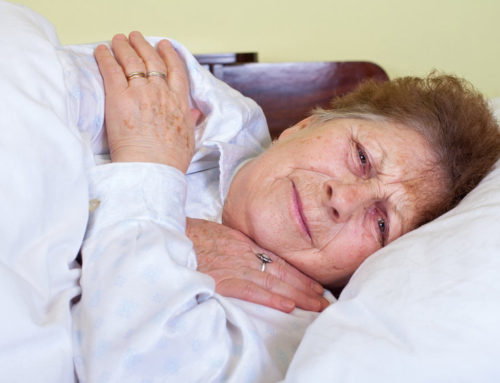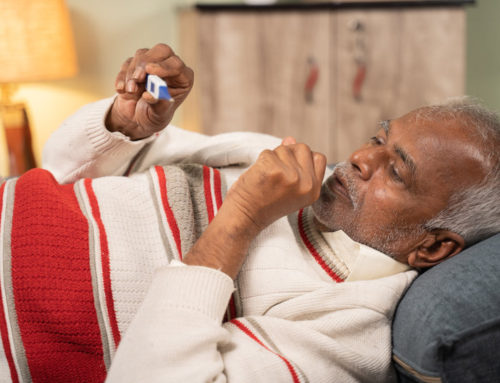Share This Story!
COPD Is Underdiagnosed
Chronic Obstructive Pulmonary Disease (COPD) is a blanket term that describes progressive lung diseases like chronic bronchitis and emphysema. While COPD isn’t a well-known disease, about 30 million Americans have the diagnosis. Because many adults are not aware of having COPD, experts believe that millions more are affected. Seniors may chalk up shortness of breath to old age, but the increased breathlessness can cause progressive damage including heart disease or worse.
Airflow restriction in the lungs
COPD in seniors can go undiagnosed and treated late. Losing lung function over time is normal, but COPD exacerbates the damage. Seniors may get winded quickly and avoid strenuous exercise altogether. The following are some of the most common symptoms associated with COPD.
- Shortness of breath: simple activities can be tiresome and strenuous
- Persistent cough: a mild cough that doesn’t let up
- Phlegm: excessive phlegm production from coughing
- Wheezing: uncomfortable chest tightness for severe cases
- Fatigue: day-to-day tasks cause breathlessness and exhaustion
Smoking reduces lung function
About 20-30% of chronic cigarette smokers can develop COPD symptoms. Other risk factors include indoor and outdoor pollution. In emphysema, for example, alveolar sacs in the lungs retain carbon dioxide, leaving people with the feeling of shortness of breath.
Testing for COPD
COPD doesn’t have to be a death knell. A common breathing test called spirometry is the preferred testing method. Physicians typically recommend that smokers older than 45 years old should have a spirometry test. Additionally, seniors who have any COPD symptoms should get tested. During the test, a patient will take a deep breath and vigorously blow out air for 6 seconds into the mouthpiece and breathing tube called a spirometer. This test is straightforward and results are immediate.
Symptoms of COPD
People that take a spirometry test and receive a ratio value of under 70% are at higher risk for COPD. Other tests may be used including arterial blood gas analysis, CT scans, pulse oximetry, and chest x-rays. There are multiple stages of COPD with symptoms ranging from simple airflow obstruction to frequent shortness of breath and possible respiratory failure.
Slowing down the symptoms
Seniors with COPD may feel like there is no hope to reversing the damage, but there are treatment options that can improve breathing and slow down the damage. Patients that stop smoking can drastically limit the progression. For seniors, symptom management is crucial.
A primary physician may refer patients to a pulmonologist and respiratory therapist to determine treatment. Treatments can include annual flu shots and pneumococcal vaccines every 5 years for people 65 years or older to reduce complications of the disease. Bronchodilators and oxygen therapy can calm muscles in the airway and improve breathing. Finally, lung-transplant surgery or bullectomy is an option in more serious cases.
Learning to live a normal life
Seniors with COPD can employ good habits like practicing good hygiene, eating healthy, and exercising to reduce the risk of exacerbating symptoms. Apart from alleviating the physical symptoms, people can benefit from support groups or any positive social activity. Any seniors with COPD symptoms should discuss testing and treatment with a healthcare provider.





